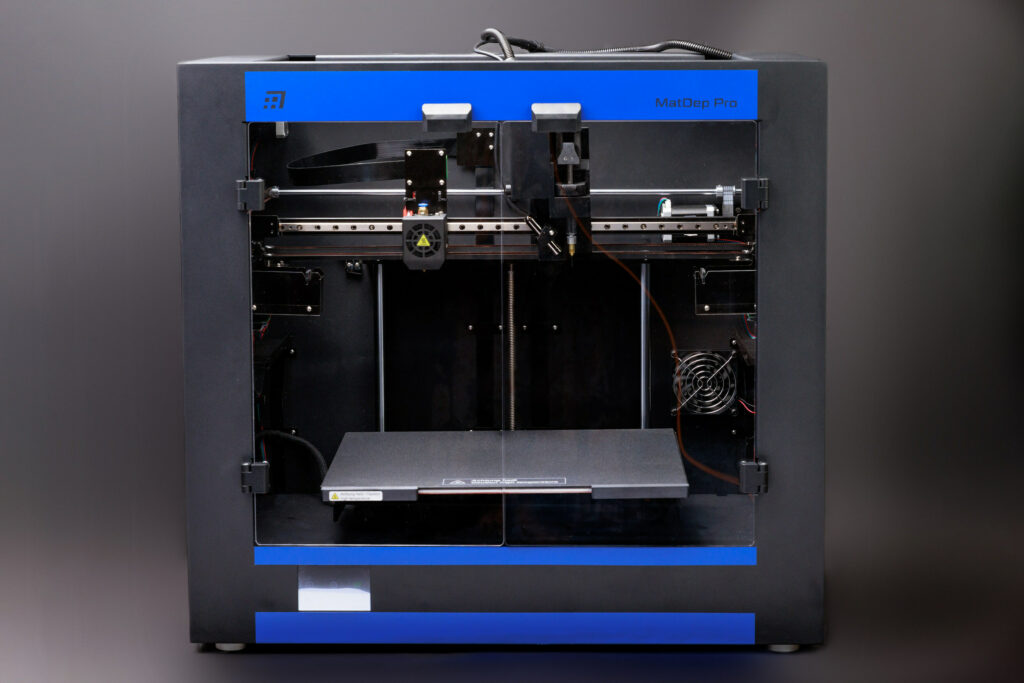
The MatDep Pro from nano3Dprint (Image courtesy nano3Dprint via PRNewswire-PRWeb)
Nano3Dprint is making 50 units available to select customers in a limited production run.
BURLINGAME, Calif.—A new multi-material and electronics printer from nano3Dprint is reported to be capable of creating electronics with dynamic or active properties, including conductivity, magnetism, or responsiveness to stimuli.
Nano3Dprint’s MatDep Pro 3Dprinter offers the largest build volume of any nano3Dprint system (14.17 x 9.84 x 7.87 inches, 360 x 250 x 200mm) and can also create devices with locally tailored composition, structure, and properties, the company said in a release. Materials can be used on various substrates to create electrical connections between components or to form patterns of electrodes, wires, or traces and embed them within fused deposition modeling (FDM) designs. The company said it was making 50 units “available to select customers via application” in a limited production run.
Nano3Dprint is a provider of next-generation additive manufacturing technologies that are said to enable printing of fully-realized electronic devices with “seamless integration of micro-to-nanoscale materials.” Its MatDep Pro is suitable for innovators, engineers, entrepreneurs, tech leaders, and advanced at-home designers, the company said.
The MatDep Pro’s fused deposition modeling (FDM) extruder and materials dispensing system adds conductive and functional inks or pastes into a 3D design in a single pass. Users can print plastics (FDM materials like ABS and PLA) with the extruder while introducing highly conductive inks (such as gold or silver) and versatile pastes, such as silicone and polymers, according to the release.
The company said the extruder and materials dispensing system move independently, producing more precise and accurate prints. According to Ramsey Stevens, CEO of nano3Dprint, the MatDep Pro minimizes the amount of cross-contamination, which is critical to avoid a short in the conductive path.
“The independent motion of the print heads prevents cross-contamination and offers better print quality, speed, and reliability,” said Stevens in the release.
MatDep Pro includes an industrial linear guide, which yields stable and precise movement control; a flexible magnetic build mat for easy removal of finished prints; and nozzle cleaning stations for the FDM extruder and the materials dispensing system. The printer’s housing is a steel construction that provides structural rigidity, less vibration, and more precise print head movement, the company said.
“A major benefit of 3D printing with functional materials is creating electronics that can conform to different shapes and surfaces,” Stevens added. “This opens up new possibilities in wearable technology, smart textiles, biomedical devices, or conformal supercapacitors, for example. Users can design and produce their own electronics on-demand, without the need for expensive and specialized equipment or facilities.”
